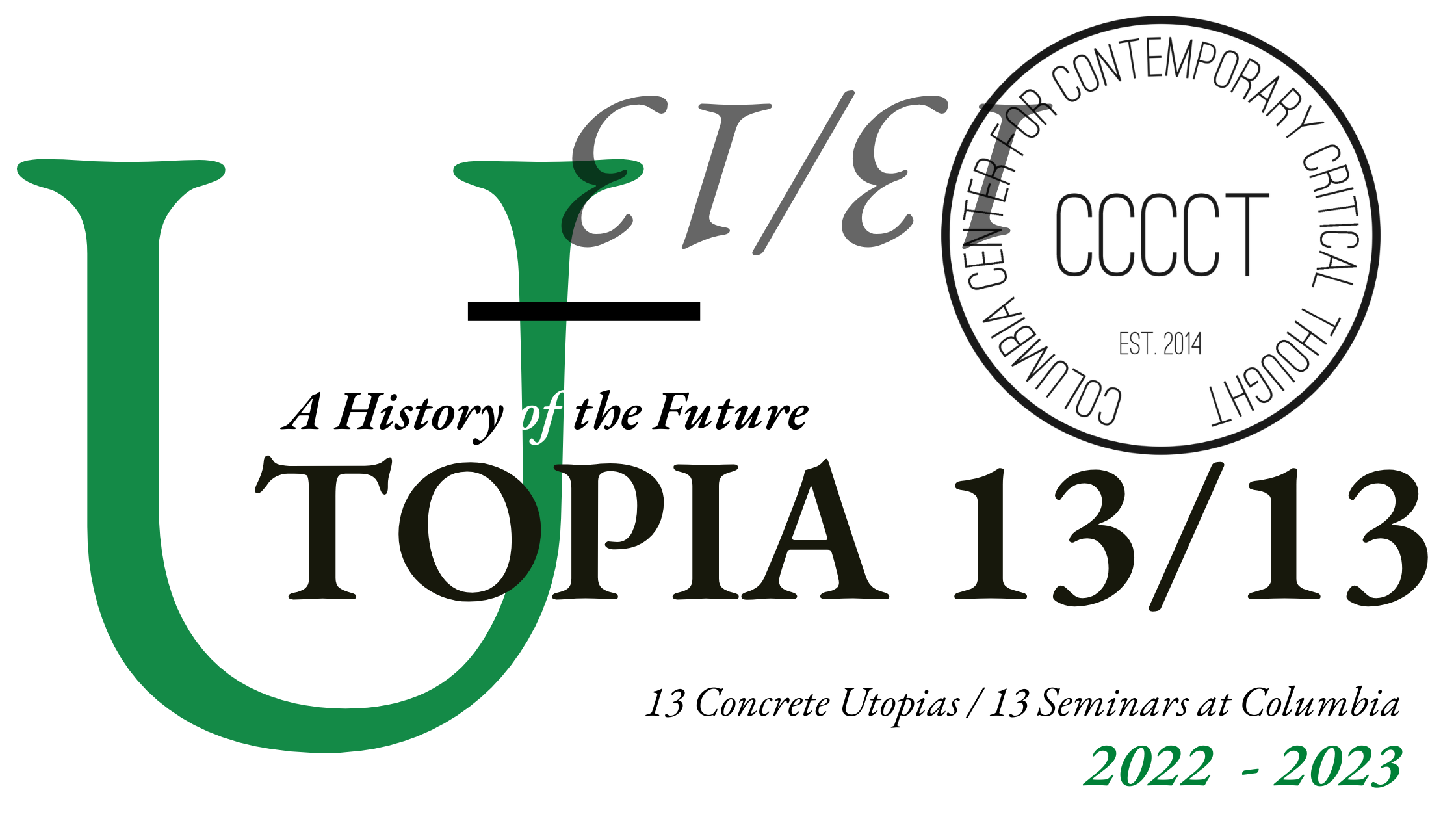(Please click on CC [“Closed Caption”] for subtitles)
Xavi Laida Aguirre, Reinhold Martin, Felicity Scott, Anthony Vidler and Bernard E. Harcourt
read and discuss
Utopia’s Ghost by Reinhold Martin
Architecture or Techno-Utopia by Felicity Scott
“Diagrams of Utopia” by Anthony Vidler
Architecture and Utopia by Manfredo Tafuri
Wednesday, April 19, 2023
Jerome Greene Annex, Columbia University
Manfredo Tafuri’s Architecture and Utopia traced the long history of architecture’s failures at breathing life into utopian dreams. Published in 1973, Architecture and Utopia came at a moment of a certain post-utopianism, and contributed to it. The 1970’s, Felicity Scott reminds us, “marked a watershed and a distinctly postutopian turn. As disenchantment grew with the capacity of recent strategies to effect structural change—from megastructures, domes, and “environmental design” to inflatables and student insurrections—critical and/or utopian vocations for architecture began to seem not only idealistic but […] even impossibly foreclosed.” Tafuri unveiled architectural illusions through a searing ideology critique. He offered, in Scott’s words, a “despondent reading of architecture’s prospects under capitalism” and a “recognition that avant-garde strategies of resistance and negation had come increasingly to serve the very machinations of an ever more totalizing capitalism.”
In the ensuing utopia polemics, a lot turned on the dialectical relationship or constant struggle between the ideal and the real, between the architectural ambition and the realized project. That tension infused much of the debate. But many of the final paragraphs in the texts from the utopia polemics betray a glimmer of hope. Tony Vidler concludes his meditations on “Diagrams of Utopia” on a positive note: “The diagram in this context can act to galvanize the discourse only if both political form and architectural form are entered into its equation.” Reinhold Martin concludes his first chapter of Utopia’s Ghost, “Territory: From the Inside Out,” with what he calls a “counterdiagram,” arguing for public housing, rather than affordable housing or sustainable housing, and in that act, risking utopia again. Felicity Scott’s book as well has a silver lining. In her words, it argues that “capitalism can be understood to resolve all contradictions only if we continue to regard the dialectic itself [the dualism of melancholy versus uncritical techno-optimism] as the sole mechanism of historical transformation. If we do not, other (positive) prospects arise within that passage of postmodernization, and it is these prospects, and the new modes of social and political subjectivity they subtend, that this book aims to trace within architecture.”
All of this suggests that the key question for architectural theory, post-Tafuri’s Architecture and Utopia, may be whether the more operative divide, rather than of the ideal and the real, is instead that of disappointment and cautious reconstruction. Perhaps the key moment of the utopia polemics is the dialectic of disillusionment and reconsidered utopia. This could be thought of as the architectural form of Gramsci’s “pessimism of the intellect, optimism of the will.”
The topic of “architecture and utopia” brings us back, more so than other sessions, to the spatial dimension of utopia and heterotopias, back from our long historical journey through the eighteenth, nineteenth, and twentieth centuries that produced the tectonic shift in the concept of utopia “from space into time,” as Ernst Bloch wrote—from the spatial realm of geography and architecture to the temporal realm of history. History remains a key dimension, of course; capitalist development demands it. But space once again dominates.
One lesson of being so grounded in buildings, projects, construction, and the architecture of utopia is that, for the rest of us outside the architectural domain, confronted with that dialectic, we too see how entangled we are within systems that sap our projects of their utopian potential. Tafuri’s Architecture and Utopia presents a deep challenge to the non-architects among us, who are just as embedded in capitalist modes of production. What makes us think that we could escape those attachments any more than the architectural utopian could? The tentacular hold of extractive capitalism in architecture unveils its equally hegemonic, dominating role in law, in higher education, throughout the American university, in book publishing, etc. Does Big Law differ in any relevant way from Big Architecture? How do we, in a law school, in a political science department, at a press, resist or escape the fealty to the wealthy donors and the exploitation of capital?
These are some of the questions we will explore with our panel of brilliant, critical architectural theorists, Xavi Laida Aguirre, Reinhold Martin, Felicity Scott, and Anthony Vidler.
Welcome to Utopia 13/13!
